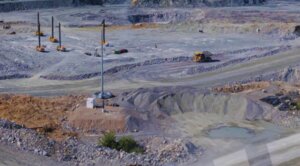Chris Marchese: It's going to be exponentially more this time around. With gold at $1,800/ounce (oz.), it is taking the reserve status away from the dollar. And with the announcement of Quantative Easing 3 (operations twist, etc.), we could see $2,500/oz. or $3,000/oz. gold very quickly.
Jason Burack: People who have courage and conviction and are willing to continue to average into their positions over the next 12–18 months will benefit. Established producers of gold and silver have humongous cash flow, and they'll add more juniors. They are going to want to add near-term producers. The juniors are where the majority of wealth is going to be created.
TGR: A few weeks ago, precious metals expert Eric Sprott said silver will be "the investment of this decade." Did that spur a change in your investment strategies?
CM: Artificially suppressing a commodity for a prolonged period, which in this case has been 30 years and counting, leads to shortages. So Sprott just reaffirmed what I was thinking, which is definitely a good boost of confidence.
JB: The Silver Institute projects industrial demand to grow by 35% by 2015. Investor demand now is really starting to rocket, especially in the developing countries. You are seeing tremendous amounts of investor demand in China and India, where normally they would have bought more gold. Sprott's been tracking the capital inflow of each dollar of gold relative to each dollar of silver invested and they are equal on a dollar for dollar amount for both metals in most cases; for some bullion dealers a lot more money is being invested into silver, and there is no way the gold:silver ratio is going to stay this much in favor of gold if this continues.
TGR: Are you more bullish on silver or gold junior equities?
JB: I like the companies that are hybrids, like Minefinders Corp. (MFL:TSX; MFN:NYSE) and Coeur d'Alene Mines Corp. (CDM:TSX; CDE:NYSE).
CM: The quality just isn't there in the primary silver juniors. Of the ones that are, most are 60–70% silver. First Majestic Silver Corp. (FR:TSX; AG:NYSE; FMV:Fkft) and Silver Wheaton Corp. (SLW:TSX; SLW:NYSE) are over 90%. The hybrids are a good way to play it. The gold:silver ratio will go into the single digits. That will also help control byproduct cash costs for a lot of the hybrids, such as AuRico Gold Inc (AUQ:TSX; AUQ:NYSE), Minefinders and Gold Resource Corp. (GORO:NYSE.A; GORO:OTCBB; GIH:Fkft).
TGR: What did you make of AuRico, previously Gammon Gold Inc., and its CAD$1.4 billion (B) bid for Northgate Minerals Corp. (NGX:TSX, NGX:NYSE.A)?
CM: I love the acquisition. It gives the company some geopolitical diversity. It's in Australia, Canada and Mexico now. Starting with the acquisition of Capital Gold Corp. earlier in the year, AuRico set itself up so that it won't have to acquire any more property or smaller companies for the rest of the cycle.
TGR: Has AuRico worked out all the issues with its Ocampo silver-gold mine in Mexico?
CM: There was a nine-month strike at El Cubo, but it will be at full capacity next year. Ocampo is doing phenomenally. The preliminary economic assessment for Guadalupe y Calvo, its next flagship (excluding Young Davidson—pending the close of the Northgate acquisition), is due in September. It has a nice blend of gold and silver. It is one of the better turnaround stories for this year.
JB: For the gold production companies right now, this is a perfect storm–type of scenario. The energy prices are staying in a relative trading range or they're trending downward, so their energy input costs are under control. The price of the gold they produce is going up, so their profit margins are expanding rapidly. Pretty much in every other sector of the economy, everyone's trying just to maintain profit margins and keep their heads above water. Maintaining current profit margins in this current macroeconomic environment is the goal of most companies; this is not the case for gold and silver producers. In the silver and gold sectors, there is a rapid expansion of the profit margins, which is super bullish.
TGR: Do you think that gold and silver hedge their production too forward, given that a number of analysts are looking at long-term gold prices of around $1,000/oz.?
CM: I think companies should do that if they don't believe in their product. As opposed to the 1960s and 1970s, it is not just the U.S. this time—it's the whole Western world. So I can understand something like Barrick Gold Corp. (ABX:TSX; ABX:NYSE) hedging because it doesn't seem to believe in its product that much. That's why it went out and bought Equinox Minerals Ltd. (TSX:EQN; ASX:EQN), a copper company instead of one of the numerous gold companies trading at gross undervaluations.
TGR: Barrick spent $6B to dehedge.
JB: I think it did start hedging its silver. And Equinox is a primary copper company. So Barrick has some tremendous issues there. I'm not buying stock if the company is hedging its primary production. If it is a primary gold producer and it is hedging gold, it's not a gold company. The reason for buying these shares is to get the leverage to the higher gold prices, and if a company is hedging its gold production, then you're not getting that.
CM: Junior miners can hedge to ensure that they'll have the funding to bring on more projects, that they'll have the necessary capital requirements. I have no problem with that, going one or two years out.
JB: That's what Revett Minerals Inc. (RVM:TSX; RVMIF:OTCBB) did to keep itself alive 18 months ago.
TGR: A couple of companies mentioned in your report "Treasure Hunting for Precious Metal Stocks" have forward-sold their production. One is Alexco Resource Corp. (AXR:TSX; AXU:NYSE.A), which sold 25% of its silver production to Silver Wheaton.
CM: That's a different case. Silver Wheaton is almost like a bank. It provides financing in exchange for a certain amount of the production at a given price. Alexco (one of my personal favorites) was in need of capital and went that route, avoiding shareholder dilution and taking on potentially dangerous amounts of debt, making it the most logical choice at the time.
TGR: It was the earliest stage that Silver Wheaton had bought into a precious metals play.
JB: The grades for Alexco are spectacular. It has the highest grades of any primary silver production company that we've looked at.
TGR: Do you expect those grades to continue at the Bellekeno mine?
CM: Definitely. It's starting to rehabilitate Lucky Queen and Onek. This district is great because Alexco can bring on these other deposits in about 12 months with very low capital expenditures. I was talking to a geologist and he was estimating $13 million (M) for one of them, which is nothing, especially given Alexco's cash on hand of more than $40M coupled with positive operating cash flow. This whole district is filled with numerous, very high-grade deposits. There are six identified so far.
TGR: The AuRico and Northgate deal comes on the heels of Trelawney Resources Inc. (TRR:TSX.V) taking over Augen Capital (AUG:TSX.V). Are we seeing the beginnings of a fresh wave of consolidation in the small- and mid-cap resource sector?
CM: Prior to the Northgate proposal, Northgate was going to acquire Primero Mining Corp. (PPP:NYSE; P:TSX). Goldcorp Inc. (G:TSX; GG:NYSE) acquired Andean Resources Ltd. (AND:TSX, AND:ASX), Kinross Gold Corp. (K:TSX; KGC:NYSE) acquired Red Back Mining Inc. (RBI:TSX) and then AuRico acquired Capital Gold. So there's been a constant flow. It will accelerate once the whole market is convinced that higher precious metal prices are here to stay.
JB: Coeur d'Alene made lots of acquisitions in a short time span to get the Palmarejo mine, and it took on debt, it diluted shareholders and it struggled when the markets collapsed. The other companies look at Coeur d'Alene as a cautionary tale. They don't mind paying a little bit higher price for the assets that they're bringing in as long as their producing mines are actually cash flowing a good amount more. Silvercorp Metals Inc. (SVM:TSX; SVM:NYSE) is buying private companies. Fortuna Silver Mines Inc. (FVI:TSX; FVI:Lima Exchange) bought Crocodile Gold Corp.'s (CRK:TSX; CROCF:OTCQX) silver property in Peru. Some juniors over the next 12–36 months will get taken out by the really high-quality juniors, producers looking to replace depleted reserves and/or expand their production profiles and growth pipelines, like Argentex Mining Corp. (ATX:TSX.V; AGXM:OTCBB) and Revett Minerals.
CM: Consider Seabridge Gold Inc.'s (SEA:TSX; SA:NYSE.A) KSM project. That's an enormous gold deposit in Canada, but it's going to cost $3–$5B just to construct. I'm surprised Barrick or someone else hasn't come in and bought it yet. That's telling me that the seniors don't have that much conviction at this point in time.
TGR: One of the issues there is Pretium Resources Inc. (PVG:TSX).
CM: I would assume it would be a joint deal.
TGR: So you wouldn't just be taking out Seabridge—you'd have to take out Pretium, too. There's a study under way as to whether or not it is feasible to combine these projects.
CM: Another example being Detour Gold Corp. (DGC:TSX), which has the ability to produce upwards of 1 million ounces (Moz.) annually. Someone like Newmont Mining Corp. (NEM:NYSE) or Barrick could easily acquire a company such as Detour, allowing it to both increase production growth profiles and replace reserves.
TGR: Detour seems to have pretty much the same plan that Osisko Mining Corp. (TSX:OSK) had. I wouldn't be surprised if it pulled it off without a takeover, if it actually made it into production without a major coming into play.
CM: Yes, because I'm guessing Detour will acquire Detour Lake Block A, owned by Trade Winds Ventures Inc. (TSX.V:TWD). It's adjacent to the main deposit. That could become well over 1 Moz. per year after all the mill and optimization.
TGR: In your research report "Treasure Hunting for Precious Metal Stocks," you list what you consider to be the top 15 undervalued precious metal stocks.
JB: We issued the report a couple of months ago, but there are still a lot of amazing values. We really like Aurcana Corp. (AUN:TSX.V), because we think it's going to be the next Great Panther Silver Ltd. (GPR:TSX; GPL:NYSE.A) in terms of the momentum play and the pop, over the next 18 months as the Shafter mine comes on-line. If management can deliver the construction of the mine and production starts on time and hits the numbers, Aurcana is going to have a humongous amount of production growth, more than any other silver junior in the next 18 months, and that is going to translate into large earnings growth. Management is planning on up-listing the stock to the regular TSX and then to a major American exchange. That is going to create a big pop in the stock for Aurcana. Longer term, Shafter also has a really good exploration upside and a lot of silver relative to the base metals.
In terms of the other juniors in the report, Revett Minerals and Argentex Mining are two of the top. Revett has a pretty large institutional interest, and it has an equity position from Silver Wheaton. Silver Wheaton owns about 15% of the total shares outstanding for Revett. The reason that Silver Wheaton is interested in the stock, and the reason that pretty much everyone is interested in the stock, is because of Rock Creek. It is one of the top 10 undeveloped silver projects left in the world, and it is arguably the best undeveloped silver project left in the U.S., and in North America for that matter.
For those not familiar with Rock Creek, this deposit has been in the legal process since the early to mid-'90s, and it is almost through that. There's already some production there from Revett Minerals, through its Tory Mine, which produces about 1 Moz./year silver production and 11 million pounds (Mlbs.)/year copper production. That is hedged right now, but those hedges are expiring at the end of the year. The local government, the state government and the people there all want the jobs that the mining would create as long as it is done environmentally responsibly. Rock Creek already has an NI 43-101 resource of well over 200 Moz. of silver and a couple billion pounds of copper resource. That is for a project that it hasn't been fully explored yet. If the company were to spend another year or two fully drilling out the property and then add the expanded resource into a new mining production plan for when Rock Creek gets built, it is not out of the realm of possibilities that the silver resource could double.
Mines Management Inc. (MGN:NYSE.A) has its massive Montanore deposit right next to Revett's Rock Creek deposit and the Montanore deposit already has a similar-sized resource to what Rock Creek is listed at. Revett has a large land package to still explore at Rock Creek, too.
For someone who is willing to let things play out while Argentex releases the new resource estimate upgrades and all the preliminaries—the prefeasibility and the feasibility—I think Argentex is going to be a potential tenbagger in three to five years with patience. The Pinguino deposit is a complicated deposit, but in a good way. Argentex in the near term, in the next three years or so, if it fast tracks things, can put a near-surface, open-pit mine into production for its lower grade silver and gold part of the deposit. It already has a nice preliminary economic assessment on 5 Moz. of silver resource that the market is not valuing anywhere close to fair value and a little bit of gold. But it is obviously expanding that resource quite a lot by the end of the year. The resource calculations are going to be a significant expansion. That is going to get cash moving quickly. But the real home run for the company is in the polymetallic, the sulfide, part of the deposit, although that will take more time to get into production.
It is quite a bit deeper, so production costs are going to be quite a bit higher. But with these grades on the silver, there will be a massive amount of more than 2,400 grams/ton (g/t) in a 250 meter (m) long x 400m deep x ~6m thick ore shoot. Since it is polymetallic and there are great grades of indium along with solid grades of gold, lead and zinc mixed in with the high grades of silver and indium, it's very valuable rock. There is a lot of indium in there with the silver at good grades. The U.S. Geological Survey is saying there is only 10 years left of indium supply at current production and demand levels. Indium is primarily used in thin-film solar panels and flatscreen TVs. So there could be growth in demand for indium as long as this current technology continues to expand.
AngloGold Ashanti Ltd.'s (AU:NYSE; ANG:JSE; AGG:ASX; AGD:LSE) Cerro Vanguardia mine is right next door to Argentex, and it is in production. The Pinguino deposit shares the Tranquilo trend. Anglo is exploring their deposit further and now hitting drilling hole results at this deposit at more than 3,000 g/t silver and more than 9 g/t gold at pretty good strike lengths. Pinguino shares the same fault line. The polymetallic part of the deposit, the sulfide part, shares the same fault line.
TGR: So it is a long strike?
JB: Yes. The fault line is pretty massive around there. Anglo used to own the Pinguino deposit and the land package as well but it realized that there wasn't going to be enough gold for it to turn Pinguino into an economic primary gold deposit. But Anglo realized there would be enough silver there for Pinguino to be a primary silver deposit so it sold the property off to a junior like Argentex to develop as a primary silver mine.
TGR: Are there any other names you want to talk about?
CM: I'll talk about a few larger ones. I am really into the streaming and royalties companies because of the fixed cost structure, which will prevent margin contraction should input costs start to rise. One is Silver Wheaton. Another is Franco-Nevada Corp. (FNV:TSX), which is trading on the TSX. It's larger than Royal Gold Inc. (RGL:TSX; RGLD:NASDAQ). The federal government just accepted a refilling for the necessary permitting of one of its streaming acquisitions, Prosperity, that didn't get permitted initially. It will be run by Taseko Mines Ltd. (TSX:TK; NYSE.A:TGB), and it will add 66,000 oz./year attributable to Franco, which is pretty large for a streaming company at a $400/oz. ongoing purchase price. It's up-listing on September 8. The good thing about it is it has a monthly dividend, so you get the compounding effect as opposed to the quarterly dividend.
Fortuna is also a good play. Its San Jose mine just came on-line. One of my favorites for the last two years has been Sandstorm Resources, which split into two companies: Sandstorm Gold Ltd. (SSL:TSX.V) and Sandstorm Metals & Energy Ltd. (SND:TSX.V). Sandstorm Gold is headed by the former chief financial officer of Silver Wheaton. It spun out a sister company with metals (base metals) and energy, so it is the first to apply the streaming concept into the base metals and energy sector. In one year, it has already managed 10 legitimate streams.
TGR: Is that fraught with more risk, given the base metal crisis?
CM: Sandstorm Metals & Energy only has one base metal stream to date, but its purchase price is $0.80/lb. of copper, and if the price of copper drops below $2.75/lb., the purchase price per pound drops to $0.55/lb. Sandstorm has guaranteed minimum cash flows negotiated in several of its streaming agreements. It has met coal, thermal coal, oil and gas, copper and natural gas streams, and is looking to add uranium, iron-ore, geothermal and other base metals. Sandstorm Metals & Energy recently did an equity offering, and is currently suffering from the equity offering hangover, but it gives it plenty of ammunition if lucrative deals present themselves. Nolan Watson was the one who pioneered the streaming concept (along with Peter Barnes and others at Silver Wheaton), so this management is just incredible. Sandstorm Gold and Sandstorm Metals & Energy both have fewer than 15 people working. They have low selling, general and administrative expenses and pay minimal income tax. They have found high-quality assets that have already shown a lot of exploration upside. Sandstorm Gold is the only 100% gold royalty/streaming company, aggressively seeking additional gold purchase agreements on top the seven already in place. In other words, they have figured out how to create companies highly involved in capital intensive industries without the heavy capital requirements, making them free cash flow machines, which will translate into dividend juggernauts within a few years.
TGR: What are your parting thoughts on the precious metals sector as we head into the fall?
CM: I think it is going to be typical, another bullish run in the metals. This time I'm actually expecting the miners to play catch-up instead of lag bullion.
JB: Gold will touch $2,000/oz. probably, at least test $2,000/oz. by the end of the year, and then it will correct a little before blowing through $2,000/oz. For silver, we are going to see silver at least test $50/oz. in the next two to three months, and $50/oz. is a very tough resistance point for silver. It is the old nominal Hunt Brothers high. It might not pass through $50/oz. on the next try, but once it does, we'll see it make a run pretty quickly into the $66–$67/oz. range.
If people take a longer view, two to three years out, it is really not going to matter if the miners underperform bullion in the short term. I hear a lot of people complaining that "my mining stocks haven't done this or that." But if you hit a couple tenbaggers or 400% gains on say two to three stocks out of every 10–15 stocks you pick, and you are doubling your money every 18–24 months on some of these stocks, you can't complain if they are lagging for six, seven or eight months. I've been investing in this sector for quite a few years now, and it is just not something that you can worry about in the short term. It might definitely underperform in the short term, but the numbers are going to be so good. The profit margins are expanding. The fundamentals are there, and they're improving. All we are waiting for now is the psychological, fundamental paradigm shift when more fund managers, more mutual funds and more pension funds say, "Hey, these gold stocks are all raising their dividends. Profit margins are expanding rapidly, production and earnings are rising and we see increasing potential for both capital gains AND dividends from producers. We're going to buy and hold more of these. We're going to continue to add positions and accumulate these shares because this sector is going to outperform the rest of the market in a major way for the next few years at the very minimum." We are nowhere near the late stages of this secular, bull market for mining stocks, but we will be in a couple of years. This is going to make the tech bubble look faint once things are finally up and running, because many of the producers will actually have the earnings to justify much higher valuation multiples.
TGR: Thank you for your insights.
Jason Burack is an investor, entrepreneur, financial historian, Austrian School economist, and contrarian. Jason co-founded the startup financial education company Wall St for Main St, LLC, to try to help the people of Main Street by teaching them the knowledge, skills, research methods, and investing expertise of Wall Street. You can also find Jason's work at his blog website at http://www.jasonburack.com.
Chris Marchese is a contributor to the Morgan Report.
Want to read more exclusive Gold Report interviews like this? Sign up for our free e-newsletter, and you'll learn when new articles have been published. To see a list of recent interviews with industry analysts and commentators, visit our Exclusive Interviews page.
DISCLOSURE:
1) Brian Sylvester conducted this interview. He personally and/or his family own shares of the following companies mentioned in this interview: None.
2) The following companies mentioned in the interview are sponsors of The Energy Report: Minefinders Corp., Primero Mining Corp., Goldcorp Inc., Silver Mines Inc., Crocodile Gold Corp., Pretium Resources Inc., Great Panther Silver Ltd., Franco-Nevada Corp., Royal Gold Inc.
3) Jason Burack: I personally and/or my family own shares of the following companies mentioned in this interview: Sandstorm Gold Ltd., Alexco Resource Corp., Silver Wheaton Corp., Coeur D'Alene Mines Corp., Aurcana Corp., Revett Minerals Inc., Argentex Mining Corp., First Majestic Silver Corp., Minefinders Corp. I personally and/or my family am paid by the following companies mentioned in this interview: None.
4) Chris Marchese: I personally and/or my family own shares of the following companies mentioned in this interview: Minefinders Corp., Franco-Nevada Corp. common and warrants, Royal Gold Inc., Silver Wheaton Corp., Sandstorm Gold Ltd., Sandstorm Metals & Energy Ltd., AuRico Gold Inc., Silvercorp Metals Inc., Primero Mining Corp. warrants, Fortuna Silver Mines Inc., Alexco Resource Corp. I personally and/or my family am paid by the following companies mentioned in this interview: None.















































